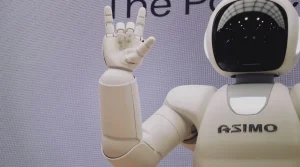AI to Human: The Ultimate Guide to Seamless Content Transformation
AI to Human: The Ultimate Guide to Seamless Content Transformation
As artificial intelligence becomes increasingly sophisticated in generating written content, the need for humanization tools has never been more critical. Whether you’re a content creator looking to enhance AI-generated drafts or a business seeking to maintain brand authenticity while leveraging automation, understanding the intricacies of AI-to-human conversion is essential for success in today’s competitive digital environment.
Understanding AI to Human Content Transformation
AI to human content transformation represents a revolutionary approach to refining machine-generated text. This process involves sophisticated algorithms that analyze artificial intelligence output and restructure it to mirror natural human writing patterns. The technology recognizes telltale signs of AI generation, such as repetitive phrasing, mechanical sentence structures, and lack of emotional depth.
The transformation process goes beyond simple paraphrasing. Advanced humanization tools examine context, tone, and intended audience to create content that feels genuinely authored by a human writer. This includes adjusting vocabulary choices, varying sentence lengths, and incorporating subtle imperfections that make writing feel more authentic and relatable.
Key Components of Effective Humanization
Successful AI-to-human transformation relies on several critical elements:
- Natural Language Processing: Advanced algorithms that understand context and meaning
- Style Adaptation: Adjusting tone and voice to match target demographics
- Emotional Intelligence: Incorporating appropriate emotional cues and expressions
- Readability Enhancement: Optimizing flow and coherence for better user experience
- Authenticity Markers: Adding human-like variations and conversational elements
Benefits of Using AI to Human Transformation Tools
The advantages of implementing AI-to-human content transformation extend far beyond simple text improvement. Organizations and individuals who leverage these tools experience significant benefits across multiple dimensions of content creation and marketing.
Enhanced Content Quality and Engagement
Humanized content consistently outperforms raw AI-generated text in terms of reader engagement and retention. When artificial intelligence output undergoes proper transformation, it maintains the efficiency of automated generation while gaining the emotional connection that drives audience interaction. This balance is crucial for businesses seeking to scale content production without sacrificing quality.
Research indicates that readers can often detect AI-generated content, leading to decreased trust and engagement. By utilizing humanization tools, content creators can ensure their material resonates with audiences on a deeper level, fostering stronger connections and improved conversion rates.
Time and Resource Optimization
The combination of AI generation and humanization tools creates an incredibly efficient content production workflow. Writers can generate initial drafts using artificial intelligence, then quickly transform them into polished, human-like content. This approach reduces the time required for content creation by up to 70% while maintaining professional standards.
Best Practices for AI to Human Content Conversion
Maximizing the effectiveness of AI-to-human transformation requires strategic implementation and attention to detail. Following established best practices ensures optimal results and maintains content quality across all applications.
Choosing the Right Transformation Approach
Different types of content require varying levels of humanization. Blog posts, social media content, and marketing materials each benefit from specific transformation strategies. Understanding these nuances allows content creators to select appropriate tools and settings for their particular needs.
- Assess Content Purpose: Determine the primary goal and target audience
- Select Appropriate Tools: Choose humanization software that matches content requirements
- Configure Settings: Adjust parameters for optimal transformation results
- Review and Refine: Manually review output for quality assurance
- Test and Iterate: Continuously improve processes based on performance metrics
Maintaining Brand Voice and Consistency
Successful AI-to-human transformation must preserve brand identity while enhancing readability. This requires careful calibration of humanization tools to match established brand guidelines, tone preferences, and communication styles. Consistency across all transformed content ensures that audiences receive a cohesive experience regardless of the original content source.
The Future of AI to Human Content Technology
The evolution of AI-to-human transformation technology continues to accelerate, with new developments emerging regularly. Machine learning algorithms become more sophisticated in understanding human communication patterns, leading to increasingly natural and effective transformations.
Future developments promise even greater integration between artificial intelligence generation and humanization processes. This convergence will likely result in seamless content creation workflows that produce human-quality output from the initial generation phase, reducing the need for extensive post-processing.
Emerging Trends and Innovations
Several key trends are shaping the future of AI-to-human content transformation:
- Real-time humanization during content generation
- Industry-specific transformation models
- Enhanced emotional intelligence in AI systems
- Improved detection and elimination of AI markers
- Integration with content management systems
Conclusion: Embracing the AI to Human Revolution
The transformation of AI-generated content into natural, human-like text represents a fundamental shift in how we approach content creation. By leveraging these powerful tools, businesses and individuals can harness the efficiency of artificial intelligence while maintaining the authenticity and emotional connection that audiences demand.
As technology continues to evolve, those who master the art of AI-to-human transformation will gain significant competitive advantages in content marketing, communication, and audience engagement. The key lies in understanding the technology, implementing best practices, and continuously refining approaches based on results and feedback.
Ready to transform your content creation process? Explore the latest AI-to-human tools and discover how they can revolutionize your approach to generating engaging, authentic content that resonates with your audience.








